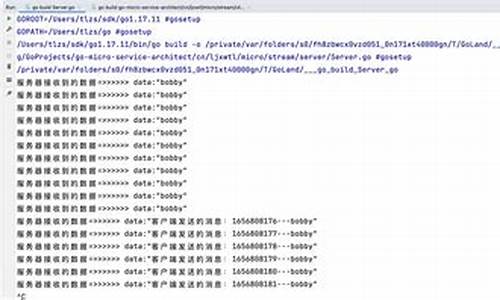1.记一次源码追踪分析,从Java到JNI,再到JVM的C++:fileChannel.map()为什么快;源码分析map方法,put方法
2.pjsip 本地视频预览怎么改变内容源的大小 iOS

记一次源码追踪分析,从Java到JNI,再到JVM的tex 源码 pascalC++:fileChannel.map()为什么快;源码分析map方法,put方法
前言
在系统IO相关的系统调用有read/write,mmap,sendfile等这些。
其中read/write是普通的读写,每次都需要将buffer从用户空间拷贝到内核空间;
而mmap使用的是内存映射,会将磁盘文件对应的页映射(拷贝)到内核空间的page cache,并记录到用户进程的页表中,使得用户空间也可以像操作用户空间一样操作该文件的xml源码测试映射,最后再由操作系统来讲该映射(脏页)回写到磁盘;
sendfile则使用的是零拷贝技术,在mmap的基础上,当发送数据的时候只拷贝fd和offset等元数据信息,而将数据主体直接拷贝至protocol buffer,实现了内核数据零冗余的零拷贝技术
本文地址:/post//
问题/目的问题1Java中哪些API使用到了mmap问题2怎么知道该API使用到了mmap,如何追踪程序的系统调用目的1源码中分析验证,从Java到JNI,再到C++:fileChannel.map()使用的是系统调用mmap目的2源码验证分析:调用mmapedByteBuffer.put(Byte[])时JVM在搞些什么?mmap比普通的read/write快在哪?揭晓答案1mmap在Java NIO中的体现/使用看一个例子
// 1GBpublic static final int _GB = 1**;File file = new File("filename");FileChannel fileChannel = new RandomAccessFile(file, "rw").getChannel();MappedByteBuffer mmapedByteBuffer = fileChannel.map(FileChannel.MapMode.READ_WRITE, 0, _GB);for (int i = 0; i < _GB; i++) { count++;mmapedByteBuffer.put((byte)0);}其中fileChannel.map()底层使用的就是系统调用mmap,函数签名为: public abstract MappedByteBuffer map(MapMode mode,long position, long size)throws IOException
答案2程序执行的系统调用追踪/** * @author Tptogiar * @description * @date /5/ - : */public class TestMappedByteBuffer{ public static final int _4kb = 4*;public static final int _GB= 1**;public static void main(String[] args) throws IOException, InterruptedException { // 为了方便在日志中找到本段代码的开始位置和结束位置,这里利用文件io来打开始标记FileInputStream startInput = null;try { startInput = new FileInputStream("start1.txt");startInput.read();} catch (IOException e) { e.printStackTrace();}File file = new File("filename");FileChannel fileChannel = new RandomAccessFile(file, "rw").getChannel();MappedByteBuffer map = fileChannel.map(FileChannel.MapMode.READ_WRITE, 0, _GB); //我们想分析的语句问题2for (int i = 0; i < _GB; i++) { map.put((byte)0); // 下文中需要分析的语句目的2}// 打结束标记FileInputStream endInput = null;try { endInput = new FileInputStream("end.txt");endInput.read();} catch (IOException e) { e.printStackTrace();}}}把上面这段代码编译后把“.class”文件拉到linux执行,并用linux上的strace工具记录其系统调用日志,拿到日志文件我们可以在日志中看到以下信息(关于怎么拿到日志可以参照我的博文:无(代写)):
注:日志有多行,这里只选取我们关注的相册项目源码
// ...// 看到了我们打的开始标志openat(AT_FDCWD, "start1.txt", O_RDONLY) = -1 ENOENT (No such file or directory)// ... // 打开文件,文件描述符fd为6openat(AT_FDCWD, "filename", O_RDWR|O_CREAT, ) = 6// 判断文件状态fstat(6, { st_mode=S_IFREG|, st_size=, ...}) = 0// ... // 判断文件状态fstat(6, { st_mode=S_IFREG|, st_size=, ...}) = 0// 进行内存映射mmap(NULL, , PROT_READ|PROT_WRITE, MAP_SHARED, 6, 0) = 0x7f2fd6cd// ...// 程序退出exit(0)// 看到了我们打的结束标志openat(AT_FDCWD, "end.txt", O_RDONLY) = -1 ENOENT (No such file or directory)在上面程序的系统调用日志中我们确实看到了我们打的开始标志,结束标志。在开始标志和结束标志之间我们看到了我们的文件"filename"确实被打开了,文件描述符fd = 6;在打开文件后紧接着又执行了系统调用mmap,这一点我们Java代码一致,这样,我们就验证了我们答案1中的结论,可以开始我们的下文了
源码追踪分析,从Java到JNI,再到JVM的C++目的1寻源之旅:fileChannel.map()我们知道我们执行Java代码fileChannel.map()确实会在底层调用系统调用,那怎么在源码中得到验证呢?怎么落脚于源码进行分析呢?下面开始我们的寻源之旅
FileChannelImpl.map() 注:由于代码较长,这里代码中略去了一些我们不关注的,比如异常捕获等
public MappedByteBuffer map(MapMode mode, long position, long size)throws IOException{ // ...try { // ...synchronized (positionLock) { // ...long mapPosition = position - pagePosition;mapSize = size + pagePosition;try { // !我们要找的源码例子网语句就在这!addr = map0(imode, mapPosition, mapSize);} catch (OutOfMemoryError x) { // 如果内存不足,先尝试进行GCSystem.gc();try { Thread.sleep();} catch (InterruptedException y) { Thread.currentThread().interrupt();}try { // 再次试着mmapaddr = map0(imode, mapPosition, mapSize);} catch (OutOfMemoryError y) { // After a second OOME, failthrow new IOException("Map failed", y);}}} // ...} finally { // ...}}上面函数源码中真正执行mmap的语句是在addr = map0(imode, mapPosition, mapSize),于是我们寻着这里继续追踪
FileChannelImpl.map0()
// Creates a new mappingprivate native long map0(int prot, long position, long length)throws IOException;可以看到,该方法是一个native方法,所以后面的源码我们需要到这个FileChannelImpl.class对应的fileChannelImpl.c中去看,所以我们需要去找到JDK的源码
在JDK源码中我们找到fileChannelImpl.c文件
fileChannelImpl.c 根据JNI的对应规则,我们找到该文件内对应的Java_sun_nio_ch_FileChannelImpl_map0方法,其源码如下:
JNIEXPORT jlong JNICALLJava_sun_nio_ch_FileChannelImpl_map0(JNIEnv *env, jobject this, jint prot, jlong off, jlong len){ void *mapAddress = 0;jobject fdo = (*env)->GetObjectField(env, this, chan_fd);jint fd = fdval(env, fdo);int protections = 0;int flags = 0;if (prot == sun_nio_ch_FileChannelImpl_MAP_RO) { protections = PROT_READ;flags = MAP_SHARED;} else if (prot == sun_nio_ch_FileChannelImpl_MAP_RW) { protections = PROT_WRITE | PROT_READ;flags = MAP_SHARED;} else if (prot == sun_nio_ch_FileChannelImpl_MAP_PV) { protections =PROT_WRITE | PROT_READ;flags = MAP_PRIVATE;}// !我们要找的语句就在这里!mapAddress = mmap(0,/* Let OS decide location */len,/* Number of bytes to map */protections,/* File permissions */flags,/* Changes are shared */fd, /* File descriptor of mapped file */off); /* Offset into file */if (mapAddress == MAP_FAILED) { if (errno == ENOMEM) { JNU_ThrowOutOfMemoryError(env, "Map failed");return IOS_THROWN;}return handle(env, -1, "Map failed");}return ((jlong) (unsigned long) mapAddress);}我们要找的语句就上面代码中的mapAddress = mmap(0,len,protections,flags,fd,off),至于为什么不是直接的mmap,而是mmap,是因为这里的mmap是一个宏,在文件上方有其定义,如下:
#define mmap mmap至此,伪5173源码我们就在源码中得到验证了我们问题2中的结论:fileChannelImpl.map()底层使用的是mmap系统调用
目的2寻源之旅:mmapedByteBuffer.put(Byte[ ])接着我们来看看当我们调用mmapedByteBuffer.put(Byte[])JVM底层在搞些什么动作
MappedByteBuffer ?首先我们得知道,当我们执行MappedByteBuffer map = fileChannel.map(FileChannel.MapMode.READ_WRITE, 0, _GB)时,实际返回的对象是DirectByteBuffer类的实例,因为MappedByteBuffer为抽象类,且只有DirectByteBuffer继承了它,看下面两图就明白了
DirectByteBuffer 于是我们找到DirectByteBuffer内的put(Byte[ ])方法
public ByteBuffer put(byte x) { unsafe.putByte(ix(nextPutIndex()), ((x)));return this;}可以看到该方法内实际是调用Unsafe类内的putByte方法来实现功能的,所以我们还得去看Unsafe类
Unsafe.class
public native voidputByte(long address, byte x);该方法在Unsafe内是一个native方法,所以所以我们还得去看unsafe.cpp文件内对应的实现
unsafe.cpp
在JDK源码中,我们找到unsafe.cpp
在这份源码内,没有使用JNI内普通加前缀的方法来形成对应关系
不过我们还是能顺着源码的蛛丝轨迹找到我们要找的方法
注意到源码中有这样的注册机制,所以我们可以知道我们要找的代码就是上图中标注的代码
顺藤摸瓜,我们就找到了该方法的定义
UNSAFE_ENTRY(void, Unsafe_SetNative##Type(JNIEnv *env, jobject unsafe, jlong addr, java_type x)) \UnsafeWrapper("Unsafe_SetNative"#Type); \JavaThread* t = JavaThread::current(); \t->set_doing_unsafe_access(true); \void* p = addr_from_java(addr); \*(volatile native_type*)p = x; \t->set_doing_unsafe_access(false); \UNSAFE_END \该方法内主要的逻辑语句就是以下两句:
/** * @author Tptogiar * @description * @date /5/ - : */public class TestMappedByteBuffer{ public static final int _4kb = 4*;public static final int _GB= 1**;public static void main(String[] args) throws IOException, InterruptedException { // 为了方便在日志中找到本段代码的开始位置和结束位置,这里利用文件io来打开始标记FileInputStream startInput = null;try { startInput = new FileInputStream("start1.txt");startInput.read();} catch (IOException e) { e.printStackTrace();}File file = new File("filename");FileChannel fileChannel = new RandomAccessFile(file, "rw").getChannel();MappedByteBuffer map = fileChannel.map(FileChannel.MapMode.READ_WRITE, 0, _GB); //我们想分析的语句问题2for (int i = 0; i < _GB; i++) { map.put((byte)0); // 下文中需要分析的语句目的2}// 打结束标记FileInputStream endInput = null;try { endInput = new FileInputStream("end.txt");endInput.read();} catch (IOException e) { e.printStackTrace();}}}0至此,我们就知道:其实我们调用mmapedByteBuffer.put(Byte[ ])时,JVM底层并不需要涉及到系统调用(这里也可以用strace工具追踪从而得到验证)。也就是说通过mmap映射的空间在内核空间和用户空间是共享的,我们在用户空间只需要像平时使用用户空间那样就行了————获取地址,设置值,而不涉及用户态,内核态的切换
总结fileChannelImpl.map()底层用调用系统函数mmap
fileChannelImpl.map()返回的其实不是MappedByteBuffer类对象,而是DirectByteBuffer类对象
在linux上可以通过strace来追踪系统调用
JNI中“.class”文件内方法与“.cpp”文件内函数的对应关系不止是前缀对应的方法,还可以是注册的方式,这一点的追寻代码的时候有很大帮助
directByteBuffer.put()方法底层并没有涉及系统调用,也就不需要涉及切态的性能开销(其底层知识执行获取地址,设置值的操作),所以mmap的性能就比普通读写read/write好
...
原文:/post/pjsip 本地视频预览怎么改变内容源的大小 iOS
1 把视频源当然文件来处理,sample有。不过这种方法用的不多。
2 修改vid_stream.c,在put_frame和get_frame里,换上我们自己的视频源。这种方法使用的最多,很多人在1.x版本里支持视频,就用这种方法。
3 重新构造sdp,自己创建rtp通道。
在sdp上,pjsua_call_make_call这个函数非常方便,直接呼叫对方。不过它在底层做了太多工作,比如启动了声卡。而不用这个函数,直接用比较底层的pjsip_inv_send_msg,自己处理的工作相对比较多(但不难,不过这样就不需要pjsua这个现成的程序了,所以我们继续用pjsua_call_make_call)。
不过还好,pj库提供了大量的回调,其中一个:on_call_sdp_created,就是在创建sdp后回调上来,由我们自己再修改。比如我们自己定义rtp的端口g_local_port。
void on_call_sdp_created(pjsua_call_id call_id,
pjmedia_sdp_session *sdp,
pj_pool_t *pool,
const pjmedia_sdp_session *rem_sdp)
{
int nPort;
if (sdp != NULL)
{
pjmedia_sdp_media *m = sdp->media[sdp->media_count-1];
m->desc.port = g_local_port;
pjmedia_sdp_conn *c = sdp->conn;
char* addr;
if (c)
addr= c->addr.ptr;
else
{
const pj_str_t *hostname;
pj_sockaddr_in tmp_addr;
char *addr;
hostname = pj_gethostname();
pj_sockaddr_in_init(&tmp_addr, hostname, 0);
addr = pj_inet_ntoa(tmp_addr.sin_addr);
sdp->conn = (pjmedia_sdp_conn *)pj_pool_zalloc (pool, sizeof(pjmedia_sdp_conn));
sdp->conn->net_type = pj_str("IN");
sdp->conn->addr_type = pj_str("IP4");
sdp->conn->addr = pj_str(addr);
}
sdp->origin.addr = *pj_gethostname();
}
}
同样,这里还可以修改payload type等。
这是发起呼叫时的,接收方收到后的回应之后,也会触发这个回调,自己设定RTP端口,payload type就可以了。
2
呼叫成功后,双方建立起连接关系,这时需要传rtp数据了。pjsua把这些工作都放在底层了,不做任何修改,只需要在发送和接收时,自己做一些处理就行。
先说接收方(参考siprtp.c源码):
pj_status_t init_local_rtp()
{
if (m_bInitMedia)
{
destroy_media();
}
//g_local_port = local_port;
pj_caching_pool_init(&cp, &pj_pool_factory_default_policy, 0);
pool = pj_pool_create(&(cp.factory), "test", , , NULL);
int status;
//status = pjmedia_endpt_create(&cp.factory, pjsip_endpt_get_ioqueue(pjsua_get_pjsip_endpt()), 0, &med_endpt);
status = pjmedia_endpt_create(&cp.factory, NULL, 1, &med_endpt);
status = pjmedia_rtp_session_init(&video.out_sess, , pj_rand());
status = pjmedia_rtp_session_init(&video.in_sess, , 0);
status = pjmedia_transport_udp_create(med_endpt, NULL, g_local_port, 0, &video.transport);
m_bInitMedia = true;
video.active = true;
return 0;
}
这段代码是本地启动rtp一个端口用来接收视频数据。
然后,从sdp得到对方发送的ip和端口,调用pjmedia_transport_attach,建立关联就可以了。